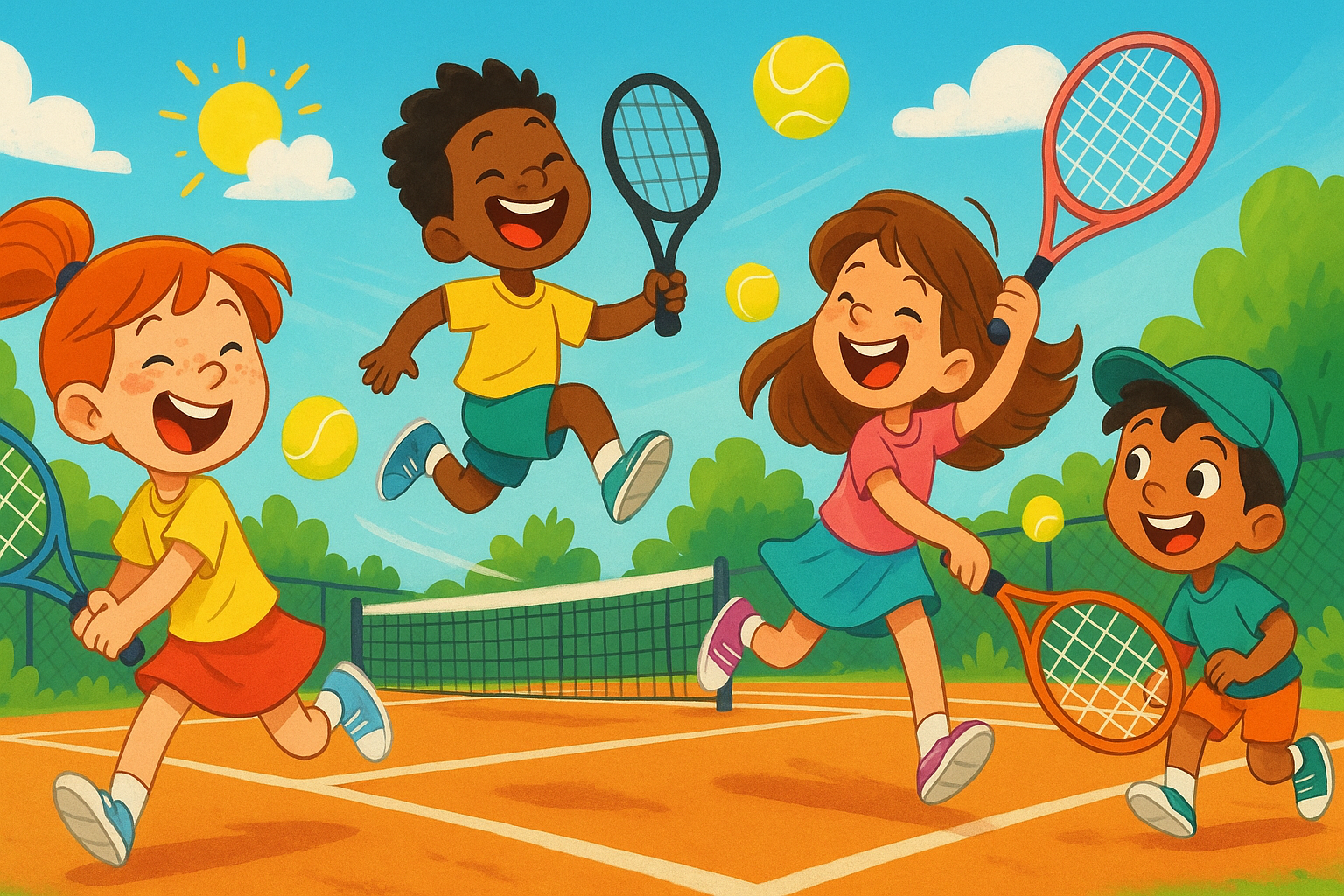Peek-a-Ball Rally 🎾
🎯 Target Skills
- Visual tracking & hand-eye coordination
- Grasping & releasing
- Turn-taking social skills
🧰 Materials
- Soft foam tennis ball
- Low cardboard box “net”
- Household alternatives: rolled-up socks, small beach ball, laundry basket barrier, couch pillow as net
👣 Step-by-Step
- Sit facing your baby with the box “net” between you 😊
- Show the ball and say “Ready…roll!”
- Gently roll the ball under the net toward your baby
- Guide little hands to grab and explore the ball’s texture
- Encourage baby to push or roll it back (“Your turn!”)
- Cheer each roll: “Wow, great rally!” 🎉
- Repeat for 3–5 minutes, following baby’s interest
- End with a cuddle and “High-five tennis star!” ✋
🤗 Parent/Caregiver Guidance
Keep your tone upbeat, pause for baby’s responses, and label actions (“Rolling the ball!”). Notice their gaze shifts and celebrate every attempt, building trust and joy.
🧠 Why This Helps
Rolling back and forth lays the groundwork for later racket skills, boosts bilateral coordination, and nurtures early social turn-taking—key building blocks for language and play.
📚 Research Foundation
- Piaget’s Sensorimotor Stage: object exploration drives learning
- “Serve & return” interaction (Harvard Center on the Developing Child)
- Montessori principle of hands-on, child-led discovery
Sound-Bounce Drum 🥁
🎯 Target Skills
- Cause-and-effect understanding
- Gross motor arm strength
- Auditory discrimination
🧰 Materials
- Sturdy baking sheet turned upside-down
- Soft tennis ball
- Household alternatives: plastic bowl, tambourine, pot lid, inflatable ball
👣 Step-by-Step
- Place the sheet on the floor like a mini drum
- Demonstrate bouncing the ball to make a “boing!” sound
- Offer the ball to your toddler—“Your turn to make music!”
- Cheer each bounce and vary tempo: slow…fast!
- Move the drum farther to encourage crawling/stepping
- Count bounces aloud: “One, two, three!” 🗣️
- End with a big “Ta-da!” pose together
🤗 Parent/Caregiver Guidance
Narrate the sounds (“That’s a loud bounce!”), prompt anticipation (“Ready, set…”), and give space for your child to initiate the next bounce.
🧠 Why This Helps
The rhythmic bounce links movement and sound, strengthening neural pathways for timing—important for future racket swings and language rhythm.
📚 Research Foundation
- Auditory-motor coupling studies (Trainor & Zatorre, 2009)
- Dynamic Systems Theory: movement patterns emerge through play
- Montessori sensorial work emphasizing sound exploration
Mini-Racket Tap ✋
🎯 Target Skills
- Fine-motor grasp & wrist rotation
- Spatial awareness (“up/down”)
- Language: action words
🧰 Materials
- Paper plate taped to a short stick (DIY racket)
- Light scarf or tissue paper “ball”
- Household alternatives: flyswatter, wooden spoon, bubble wrap paddle, balloon
👣 Step-by-Step
- Show the racket and say “Tap tap!” while lightly hitting scarf
- Hold your child’s hand to guide first taps
- Let go and cheer independent taps 👏
- Say “Up!” as scarf floats, “Down!” when it lands
- Move scarf side-to-side to encourage tracking
- Count taps together to five
- Add silly spins or gentle tosses if child is eager
- Finish with a victory clap and hug
🤗 Parent/Caregiver Guidance
Use expressive gestures and pause for your toddler to respond; name directions (“left, right”) to build spatial vocabulary.
🧠 Why This Helps
Light objects slow movement, giving tiny muscles time to plan and adjust—perfect prep for future ball contact while also enriching language.
📚 Research Foundation
- Gibson’s Affordance Theory: objects invite specific actions
- Vygotsky’s Zone of Proximal Development—scaffolded tapping
- Baby sign & gesture studies improving language uptake
.svg)
